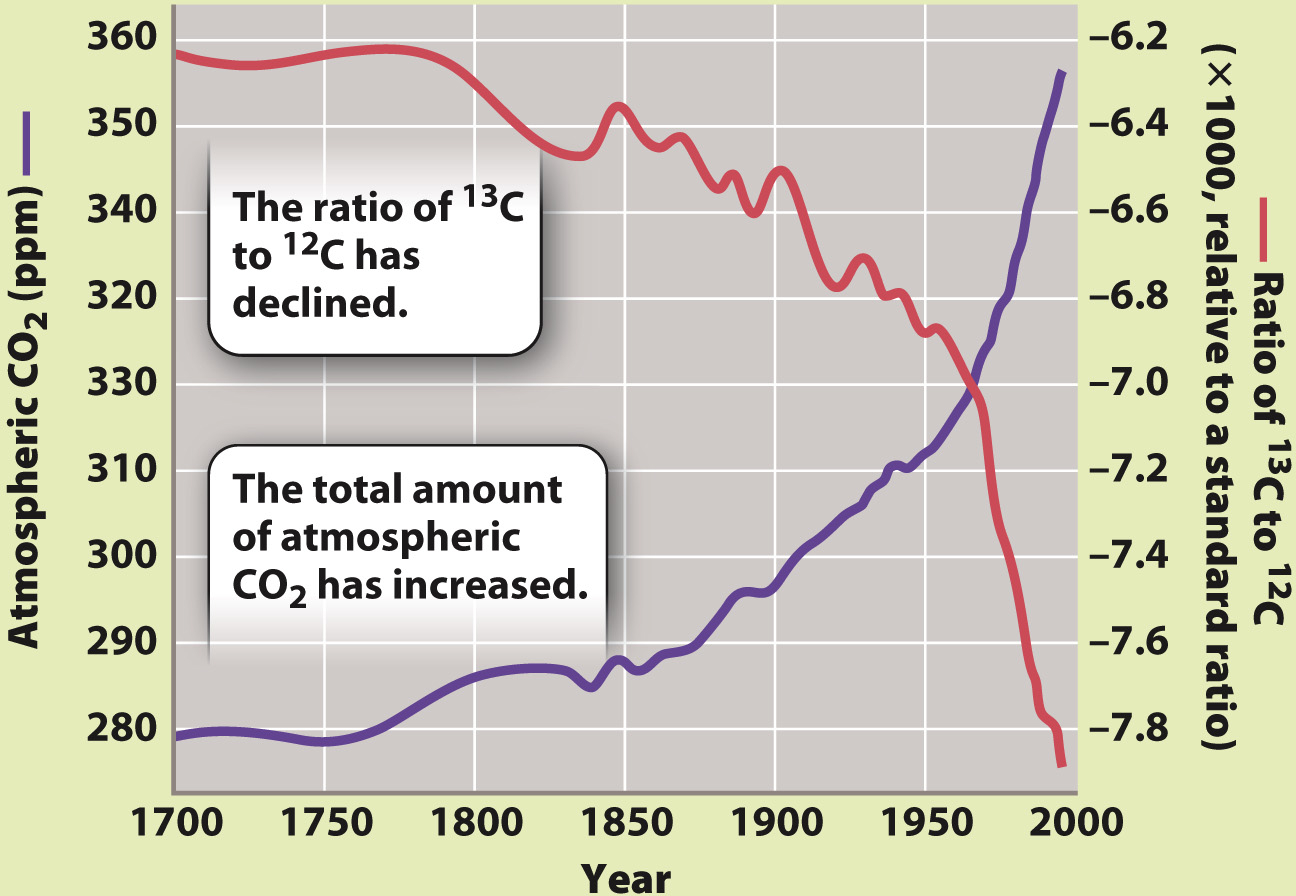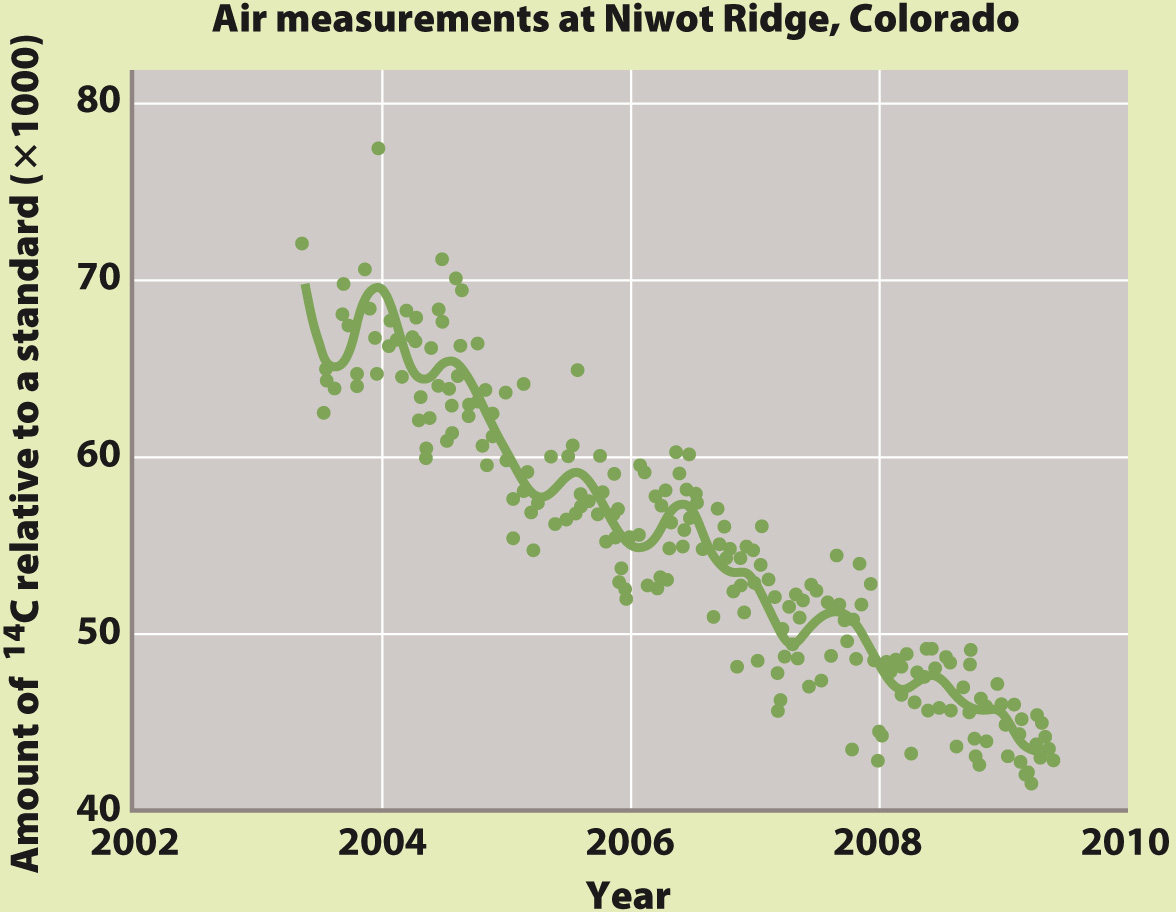HOW DO WE KNOW?
FIG. 25.4
What is the major source of the CO2 that has accumulated in Earth’s atmosphere over the past two centuries?
BACKGROUND Chemical analyses show that CO2 levels in the current atmosphere are about 40% higher than they were at the time of the American Revolution. This rise coincides with major advances in manufacturing and transportation, which are driven by the burning of fossil fuels. These coincidences in timing suggest that human activities are responsible for increasing CO2 levels.
HYPOTHESIS The burning of fossil fuels, central to the emergence of modern industrial societies, has been the principal cause of the measured increase of CO2 in the atmosphere.
EXPERIMENT AND RESULTS Hans Suess measured the abundance of the two stable isotopes of carbon, 13C and 12C, in air samples and demonstrated that the ratio of 13C to 12C in atmospheric CO2 has decreased over the second half of the twentieth century. Additional measurements of coral skeletons and wood show that the ratio of 13C to 12C in air has been decreasing over the entire period during which atmospheric CO2 levels have been increasing.

DISCUSSION The ratio of 13C to 12C in CO2 added to the atmosphere over the past 200 years is lower than that in CO2 that was already in the air more than 200 years ago. The ratio of 13C to12C in CO2 emitted by volcanoes is too high to account for the data, as is the ratio in CO2 released from the oceans. In contrast, organic matter formed by photosynthesis has just the right ratio of 13C to 12C to account for Suess’s measurements. By itself, the changing abundance of 13C in the air could reflect the conversion of plant carbon to CO2 by burning, or it could reflect the burning of fossil fuels formed by the burial of plant and algal materials in the geologic past.
FOLLOW-

CONCLUSION Fossil fuel burning by industrialized societies has been, and continues to be, a principal source of CO2 buildup in Earth’s atmosphere.
SOURCES Revelle, R., and H. E. Suess. 1957. “Carbon dioxide exchange between atmosphere and ocean and the question of an increase of atmospheric CO2 during the past decades.” Tellus 9:18–